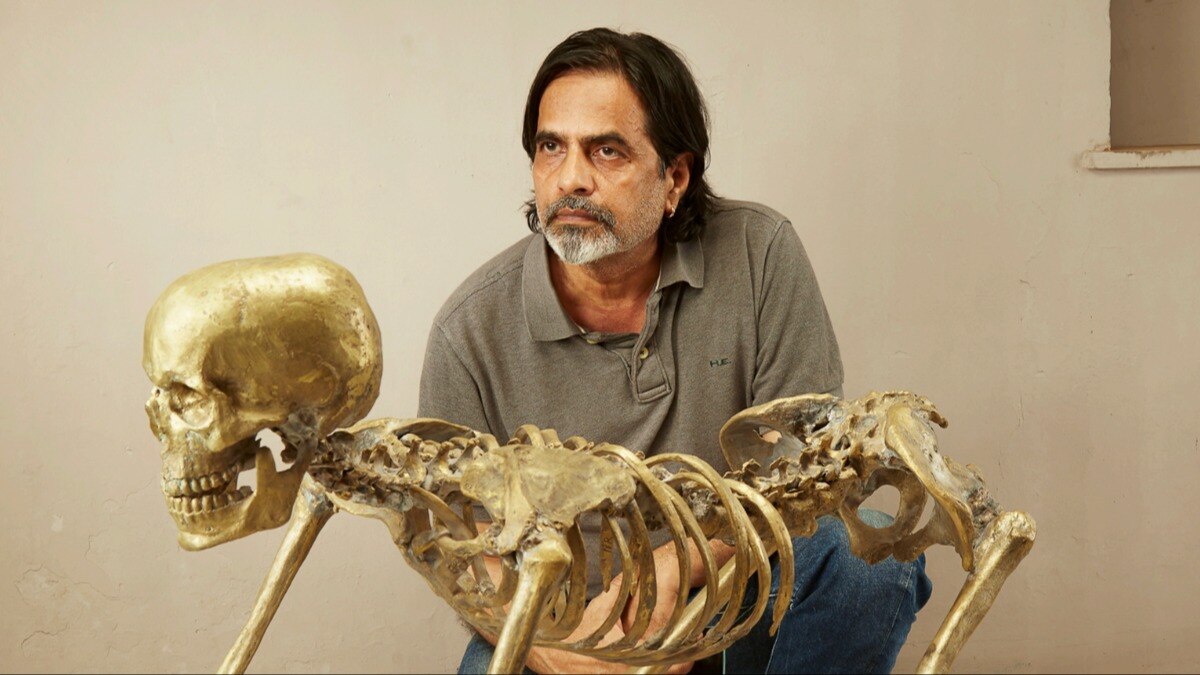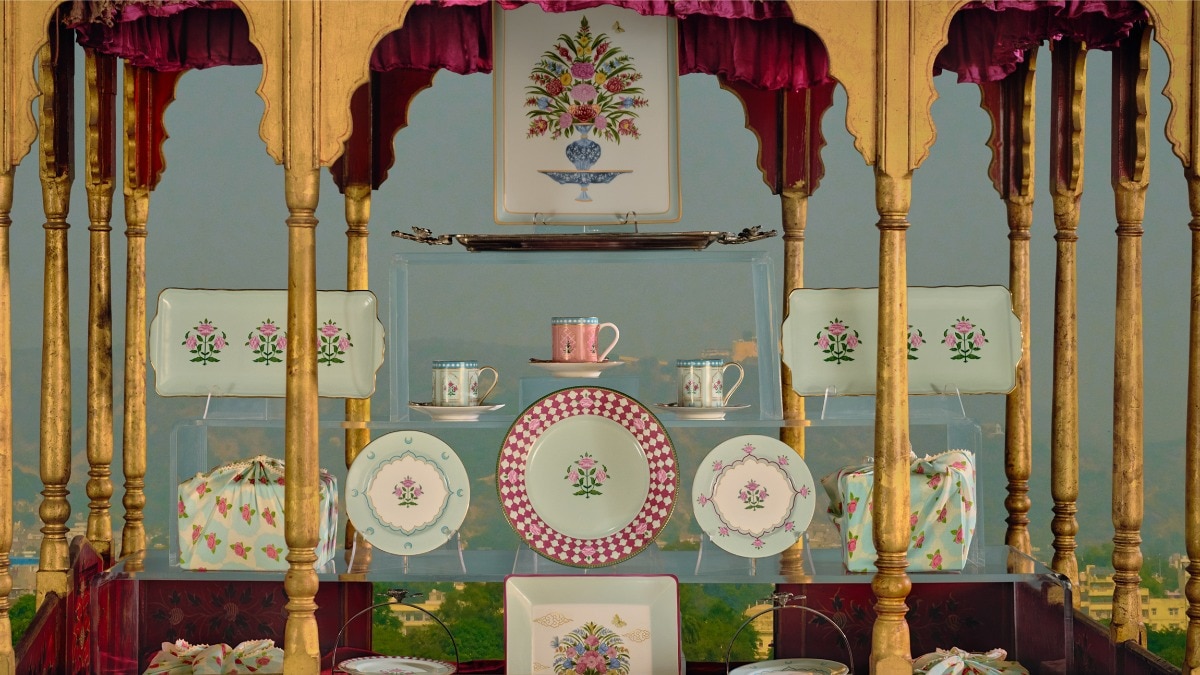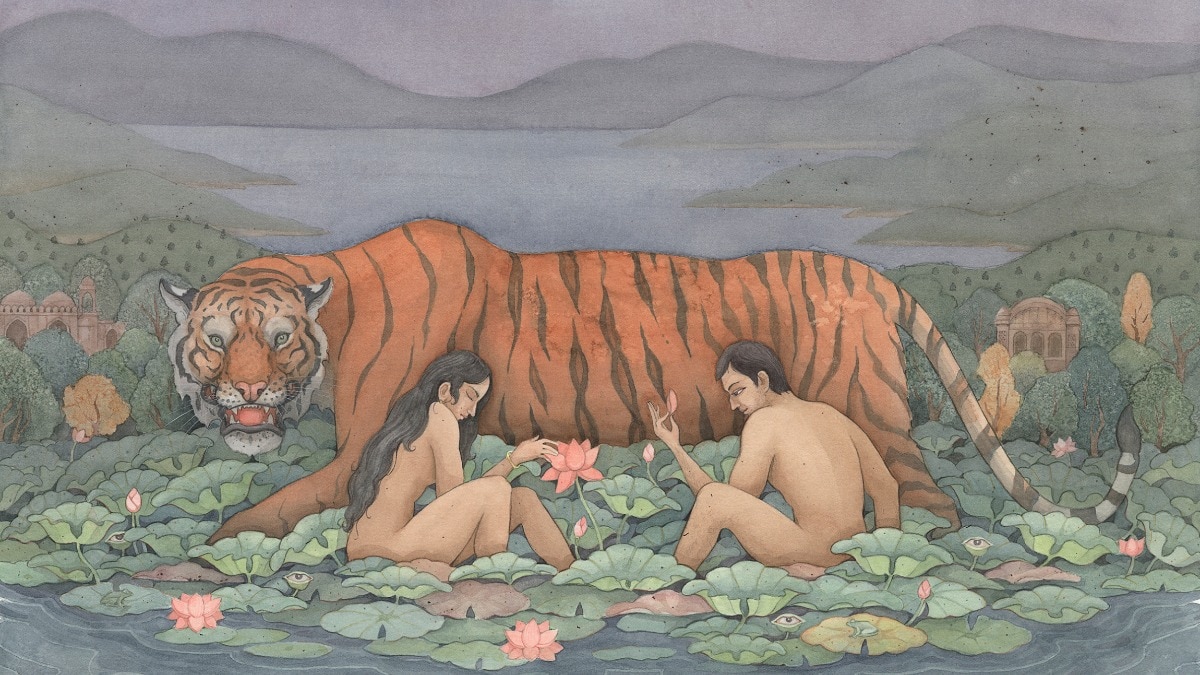
Sudarshan Shetty's latest collection, 'One Life Many' confronts the idea of self
GallerySKE's 'One Life Many' will be on display from January 6 to 17 at IFBE, Ballard Estate, Mumbai, from 10am to 7pm.


Renowned for his captivating and thought-provoking art, Sudarshan Shetty transcends traditional boundaries by blending painting, sculpture, and installation into a unique narrative. His latest exhibition, 'One Life Many', showcases his remarkable ability to weave complex cultural themes into his work, inviting audiences on a journey through the transformative power of art. The new collection also features his eponymous film's India premiere.
It blends film with physical assemblages, encouraging viewers to discern reality from illusion, inspired by a South Asian myth about personal transformation. It examines the intertwining of cinema, theatre, and museums, using everyday objects to question identity and reality, and draws on the words of Pandit Kumar Gandharva to explore the concept of multiple selves within an individual.
'One Life Many' explores experiences of self and world that tie us together, neither heightening the specificity of individual experience nor subsuming them into empty universals.
In an exclusive interview with Bazaar India, Shetty shares the rich tapestry of his artistic path and delves into the depths of his process, inspirations, and the challenges that shaped his distinctive style.

Harper's Bazaar: What inspired you to come up with 'One Life Many', and how has the journey been like so far?
Sudarshan Shetty: The essential core of ‘One Life Many’ lies in a folk story that I heard a while ago and later found out that it seems to find its versions in various cultures in this part of the world. This story is also believed to have been retold by the great Sufi mystic, Jalaluddin Rumi in the twelfth century. Retelling is the life blood for the continuity of all cultures. For this show, I started with a film that could be considered to be an enactment of the story and the objects that followed that retell the essential content of the story in all its variations possible.
HB: Could you share a core memory or a particularly impactful moment you experienced during the creation of 'One Life Many'? How has this memory influenced the overall project?
SS: I have been working on this show for about four years now. It evolved to be an entirely different set of objects than from where I began. There were many omissions and evolutions through this time. I still feel that I have a lot to tell through this story. I see the show ‘One Life Many’ as the first chapter of a longer novel to come.
HB: In your perspective, what is the best part about the 'One Life Many' project, and why do you find it to be the most significant or rewarding aspect of your work?
SS: I see ‘One life Many’ as a suite of various confrontations with the idea of ‘self’ and also thinking of self in its various possibilities of being, one may find within oneself.
HB: Could you share with us your journey into the world of art and how you developed a unique style that encompasses such a diverse range of mediums?
SS: I studied commerce before I joined the J J School of Art to study painting; I was considered to be a good painter in my neighbourhood in Mumbai. As a child, I won some prizes in the local painting competitions, and that made me believe that I could be an artist. I was good at copying portraits of film stars and my favourite sports people. I got commissions to paint portraits of people's deceased relatives.
HB: What is your creative process, especially when working with different mediums like paintings, sculptures, and installations? Is there a common thread that ties all your work together?
SS: It's important for an artist to be aware of the mannerisms one may gather over time. For me, one of the ways to sidestep this is to tinker with multiple mediums and other possible skills that I am unfamiliar with, and bring them to bear subject/s that are close to my heart.

HB: Where do you draw inspiration from for your artworks, and how do you see your Indian heritage influencing your creations?
SS: In the last decade or so, I have been trying to look back at the aesthetic strategies that are embedded within some poetic and musical traditions to inform my work in general. I believe that this effort may provide some clues, even if partially, for me to unravel my present. In my role as an artist, I would like to see my work as a mediation between how I am conditioned to belong in a structure that is dictated by western canons, and a life, as I see, from where I belong.

HB: In your opinion, what role does art play in society today, especially in the context of the rapidly changing cultural and political landscapes?
SS: Art and its function, whether social or philosophical, is a vast topic that may need an erudition of another kind to elucidate. Whether in life or my work, I see myself as a performer in the theatre who wants to play the role as well as possible; and I also know that I may not be equipped enough to address the subject in a conclusive way.
HB: What advice would you give to young artists who are just starting out and aspire to follow a path similar to yours?
SS: Dreams can be real.
HB: Looking ahead, how would you like your work and contributions to the art world to be remembered?
SS: I do not want to carry the burden of working to be remembered.










